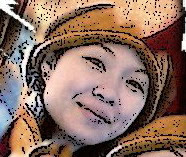
The story of Siddhartha's path to enlightenment has a mythological quality. The son of a ruler, a prophecy at the time of his birth said that he would be a great king if he stayed at home, but would become a savior for mankind if he were to leave home. Therefore, his father kept him at home and surrounded him with all the worldly pleasures a boy could want, and kept all painful and ugly things out of his sight.
Siddhartha eventually married and fathered a son, but still had not left his father's palace. One day, he told his father that he wished to see the world. This excursion would change his life, for during this journey, he saw the "four passing sights". Even though his father had ordered the streets to be cleaned and decorated and all elderly or infirmed people hidden, some people did not listen. Siddhartha saw a decrepit old man, and learned for the first time that everyone someday becomes old. Next, he met a sick man, who taught him that people are liable to sickness and suffering. He saw a funeral procession which taught him that people die. Lastly, he saw a monk begging for food. He longed for the tranquility which he saw on the monk's face and decided this was the lifestyle for him. He left his father, wife, and son to wander and learn the path to salvation.
During his wanderings, Siddhartha rested under a fig tree (which would later be called the bodhi or bo tree, meaning a tree of wisdom) for seven days. While in meditation, he reached the highest degree of nirvana. During this time, he learned truths which he, Buddha, would impart to the world until his death at age 80.
Buddhism became a strong force in India before the Buddha's death. The diffusion of Buddhism, however, was limited until the Indian emperor Asoka became a convert and supported missionary activities. Soon, Buddhism became established in China, Japan, Korea, and Southeast Asia, where it is most practiced today.Hinduism is now the predominant Indian religion.
References


























